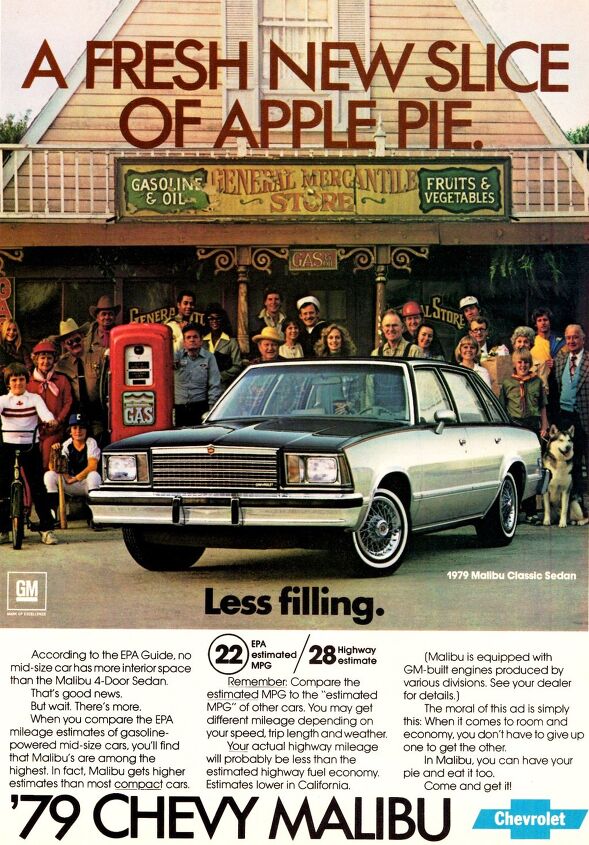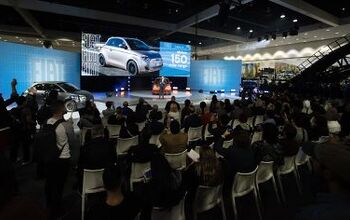No Fixed Abode: Give Us Something Familiar, Something Similar

Let’s make up a phrase, shall we? Come on, it will be fun. We are going to associate a celebrity name with a known phenomenon in human society. Think of “Streisand effect”. That sort of thing. What we’re looking for is a celebrity who was critically popular when he or she was new, fell into disrepute for a while, then experienced a renaissance of renown. Maybe John Travolta would be an example of this. Or Paul McCartney. Run-DMC. Who knows.
But make it up fast, so I can put it in this next sentence: “The 1977 GM B-body is experiencing a XXXXXX Effect lately.” It’s true. That platform was basically the best-selling full-size vehicle for every one of the 25-ish years it was available for sale. But only now, as the Panther falls into history and we start judging it on the merits rather than the singular merit of remaining on sale in showrooms, do we see how well-conceived that “downsized” car was. There’s a rising tide of B-body nostalgia, restoration interest, and classic-car cred.
And it’s interesting just how often a paean to the B-body will be followed by a coda expressing disdain for the A-body (later, when a front-wheel drive A-body arrived, reclassified as G-body) midsize sibling. Due mention will then be made of things like fixed rear windows on the sedans, the ungainly Aerobacks and the unnecessarily Baroque style of the coupes. If the writer really wants to hammer his point home, he’ll simply ask you, the reader, to compare the proportions of the two platforms. The B is sleek and elegant, whether in Caprice glassback coupe or faux-wood Pontiac Safari battlewagon form. The A/G, on the other hand, is ungainly and upright.
No man who could have driven a B of any badge should have settled for an A. But settle they did, and in numbers that increased as the late ’70s turned into the early ’80s. In fact, the shift from “B” to “A” wasn’t just massive; it was permanent and relevant even today. Hold on: I’ll show you.
These are the critical dimensions of an averaged A-wagon, trying to remove the outlier dimensions from the Century sport wagon wing and the protruding nose of the Pontiac:
- Wheelbase: 108.1
- Length: 193.4
- Width: 71.2
- Height: 54.5
- Cargo capacity with rear seats down: 72.4 cubic feet
This worked remarkably well for most two- and even three-child families. It wasn’t terribly spacious, but it was enough. For that reason, well-maintained A-wagons kept some value into the early ’90s.
The A-wagon was nominally replaced by the front-wheel drive A-wagon, but in reality it yielded to the minivan. The much-heralded ascension of the Voyager and its competitors to the top step in the family market was, in retrospect, short-lived. Say eight years, because by 1994 the Ford Explorer was already outselling the Chrysler minivan and the other SUVs to follow its four-door, midsized pattern were already appearing on the market.
The 1995 Explorer would set a new SUV sales record and eclipse the Taurus within the company from that time on. It was aerodynamic but rugged, capable but luxurious, affordable but not too much so. American families traded in their front-wheel drive sedans by the hundreds of thousands, thrilled to get into this new size of vehicle. Here are the dimensions from a 1995 Explorer:
- Wheelbase 111.5
- Length 188.5
- Width 70.2
- Height 67
- Cargo capacity: 81.6 cu.ft.
You get it, right? The Explorer only slightly varies from an A-wagon in size and capacity. The difference is height. Ford sold millions of them. It’s only really tragic when you think about how good a rear-wheel drive 1996 A-car would have been had it received the kind of funding that the dismal-failure front-wheel drive family cars got over the previous decade.
Eventually, the tide turned on the Explorer. People got tired of its unassuming looks, its prestige-free interior fittings, the dismal fuel economy, and so on. They voted with their feet and their money for the family cars of the 2010s — the CUVs. Here are the dimensions of a popular and well-regarded CUV, the Equinox/Terrain:
- Wheelbase 112.5
- Length 187.8
- Width 72.5
- Height 66.3
- Cargo capacity: 63.7 cu.ft.
So compare the average family sedan of 1978 to the average family vehicle of 2015. Just how much progress have we made in almost forty years? And if it’s been in areas besides actual downsizing, what has that progress been? If you’re feeling particularly inquisitive, take a look at the dimensions of a 1957 Chevrolet wagon, too.
Later on this week we’re going to talk about why the standard size of a family vehicle hasn’t really changed very much since the Korean War. But now is the time for you to disagree with my premise: that we’ve seen the same capacity, in different wrappers, without fail since before the birth of Generation X. Discuss.

More by Jack Baruth
Latest Car Reviews
Read moreLatest Product Reviews
Read moreRecent Comments
- Statikboy I see only old Preludes in red. And a concept in white.Pretty sure this is going to end up being simply a Civic coupe. Maybe a slightly shorter wheelbase or wider track than the sedan, but mechanically identical to the Civic in Touring and/or Si trims.
- SCE to AUX With these items under the pros:[list][*]It's quick, though it seems to take the powertrain a second to get sorted when you go from cruising to tromping on it.[/*][*]The powertrain transitions are mostly smooth, though occasionally harsh.[/*][/list]I'd much rather go electric or pure ICE I hate herky-jerky hybrid drivetrains.The list of cons is pretty damning for a new vehicle. Who is buying these things?
- Jrhurren Nissan is in a sad state of affairs. Even the Z mentioned, nice though it is, will get passed over 3 times by better vehicles in the category. And that’s pretty much the story of Nissan right now. Zero of their vehicles are competitive in the segment. The only people I know who drive them are company cars that were “take it or leave it”.
- Jrhurren I rented a RAV for a 12 day vacation with lots of driving. I walked away from the experience pretty unimpressed. Count me in with Team Honda. Never had a bad one yet
- ToolGuy I don't deserve a vehicle like this.


































Comments
Join the conversation
To what we know already, that will keep us steady? Well, someone had to finish it. And somehow, that someone was me.
... and apart from a 9 inch height increase, my XC70 is within a few inches of those measurements, too.